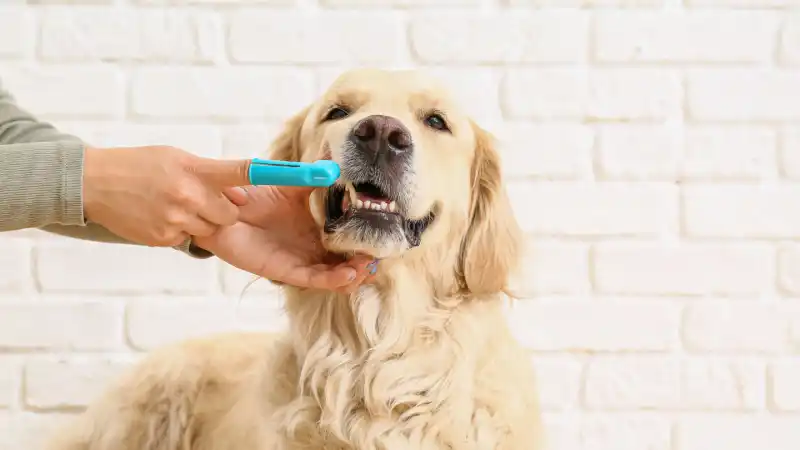National Pet Fire Safety Day Tips
July 15th is National Pet Fire Safety Day. Learn some important fire safety tips to keep your pets safe in the event of an emergency, like carrying a first-aid kit.

Nothing is worse than the thought of your pets trapped inside a burning house. National Pet Fire Safety Day is July 15, and this day was created to educate pet owners about potential risks when pets are left home alone. Experts say 1,000 fires are started by pets each year, often by nothing more than a simple nudge of the knobs on a stove, and approximately 40,000 pets die every year in house fires.
Placing a free rescue fire safety sticker on your door or window is a good way to start protecting your pets and notifying emergency responders there are animals inside. Remember that preparation and planning are something you can do for your furry friends as well. Always know where your pets hide when scared; this especially applies to cats. Also, have an evacuation plan and a carrier or leash by the front door to ensure a quick exit.
Tips to Keep Pets Safe During House Fires
These pet fire safety tips can help ensure your cat or dog's safety when they’re left home alone:
Make sure all stove burners are off and open flames extinguished.
Use fire alert decals (window clings) so emergency responders know how many pets are in your home.
Make sure evacuation plans include your pets.
Ensure all pets are microchipped and information is up to date.
Have an emergency supply of pet food ready (at least 3 days’ worth).
Window clings are typically small, so don’t forget to write down the number of pets in the house, as well as types (cats, dogs, etc.). Also, include where your cats will be hiding!
How To Prevent Your Pet from Starting a House Fire
Even though your pets don’t have opposable thumbs, they can still find a way to start a house fire. Stoves, electrical cords, and candles are usually how the fire starts.
So, before you leave the house, consider these tips:
Remove stove knobs, especially if your pets are in the kitchen behind an X-pen.
Replace water bowls left outside on wooden decks with stainless steel models, since the sun’s rays can ignite the wood beneath them.
Invest in flameless candles.
Secure young pets in a safe area or crate with enrichment toys filled with delicious treats (like Kong toys).
Be Prepared for Any Emergency
Make An Emergency Kit
Pet owners with first-aid kits need to make some adjustments to ensure they include items required for any emergency. In addition, the kits should be together in one location.
Use a microchip or ensure your pet’s collar tag is up to date with your contact information.
Have a pet-friendly place in mind if you have to leave your home. A list of pet-friendly hotels in the area is a must for your kit.
Carry a picture of you with your pet in the event of separation.
Take a pet carrier or crate with you for transport.
Carry a list of shelters that typically take in pets during an emergency.
Most Red Cross shelters are unable to welcome pets. They have, however, partnered with RedRover, which can help you find out where pets can safely stay during an emergency.
Pet-Proof Your Home
Preparing for an emergency is like puppy-proofing your house, since Murphy’s law is always in play when you live with pets. Electrical cords must be secured and hidden from cats and dogs. Here are other ways to make your pet’s environment safe.
Use baby gates to keep your dog confined in case there is an emergency.
Make sure coffee tables don’t have sharp edges.
Keep cords from blinds and drapes out of reach of cats, since they’re a choking hazard.
Remove rocking chairs, as these can easily catch tails and paws.
Place all human medications in a closed cabinet.
Keep fireplace logs away from pets, since sawdust and pieces of wood can cause bowel obstruction.
Prepare with Safety Drills
Safety drills save lives. Did you know that you have as little as two minutes to escape your home during an emergency? That’s why you need to know your escape route in advance and determine how quickly you can get your pets out.
Find two paths to the outside from every room.
Ensure that escape paths are uncluttered and not blocked by furniture.
Choose a safe outside meeting place and a family member to be responsible for each pet.
Test smoke alarms monthly.
Secure Pets Young and Old
Both young and old pets need to be near an entrance door or back slider when you leave home. Firefighters need to find your pets easily and quickly get them out. Your dog and cat will be terrified, and older pets may struggle to move quickly.
How Do You Treat a Burn?
Pets rescued from house fires may suffer from severe smoke inhalation or extensive skin burns. According to the American Kennel Club, “Burns from fire, smoldering materials, hot water, grease, tar, and smoke are among the most painful injuries.” You can even help treat your dog’s burns before you go to the vet, either by immersing the burns in cool water or saline solution or spritzing the affected area.
Not able to get to a hospital quickly? Clip away your dog’s hair, clean the area with saline, and apply ointment (specifically silver sulfadiazine), which is a must for your first-aid kit.
Pet Insurance Can Help Protect Pet Owners from Costly Vet Bills
House fires are a horrible event for all involved, but they may be lethal for pets. Smoke inhalation is a serious medical condition, and a veterinarian must treat your pet if it occurs.
For extra protection in case of a fire-related emergency, check out AKC Pet Insurance. Accident & Illness Coverage (underwritten by Independence American Insurance Company) allows you to focus more on the health of your pet and less on expensive veterinary bills. Click here for a customized quote that suits your budget and pet.
Christy is a writer, editor, blogger, chicken keeper, and storyteller. She uses her knowledge as a certified veterinary technician to inform animal lovers on health and wellness topics. Christy's Standard Dachshund and Beagle mix are the inspiration behind her writing portfolio and essays.
READ MORE ARTICLES

